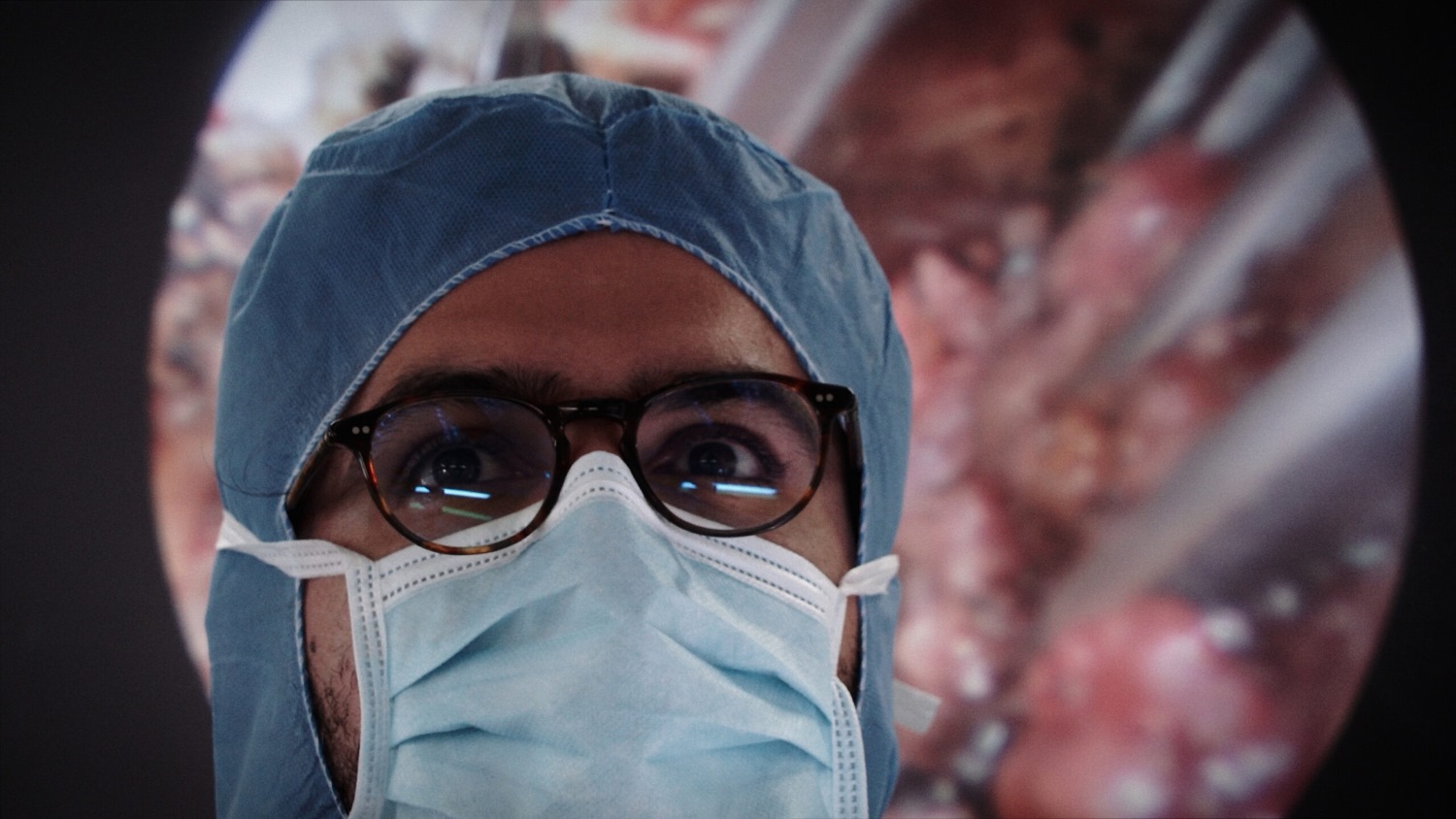De Humani Corporis Fabrica
(France/USA/Switzerland, 118 min.)
Dir. Véréna Paravel, Lucien Castaing-Taylor
The notion of “immersive cinema” reaches new heights with the extraordinary De Humani Corporis Fabrica. The Sensory Ethnography Lab duo of Véréna Paravel and Lucien Castaing-Taylor achieve their boldest feat yet by taking cameras inside the human body. Thanks to a tiny camera engineered specifically for the project, roughly the size of a tube of lipstick, they treat audiences to the intricacies of humans’ inner workings. De Humani Corporis Fabrica tours intestines, bowels, brains, bladders, and everything in between. It’s an up-close and intimate glimpse of the complexity of the human body. As the camera winds through patients’ intestines and navigates bodily fluids, one gets a rare insiders’ look at mortality. The operating theatre gets boldly reimagined here as the filmmakers dive into surgery with an all-seeing eye.
Cinephiles attuned to their challenging and demanding work of Paravel and Castaing-Taylor will find that Fabrica requires engaged viewing but yields great rewards. Much like Leviathan or Caniba, this doc isn’t an easy watch. Add the ick factor of the body, and it’s admittedly not a film for everyone. However, it’s also refreshingly accessible for an experimental feature. These images are strange yet familiar as the filmmakers/anthropologists capture views of surgery from both inside and outside the body. Life and death co-exist in a delicate dance here as the film observes doctors’ hands nimbly caring for patients. Or sometimes they give body parts the good solid whack or yank they need to be put into shape. It’s bound to make viewers squirm, possibly with delight.
Elaborate Organisms
The film observes the goings-on of operating rooms in a few hospitals in the north of Paris. Shooting some of the material during the early days of the COVID-19 pandemic, but without any obvious signifiers of time, the filmmakers capture the frailty of the human body, but also that of the complex organism—the hospital—that preserves it. As the tiny camera tours the body like a child riding a waterslide, the camera also travels through the serpentine corridors of the hospital. This portrait of the guts is twofold.
De Humani Corporis Fabrica follows a loose episodic structure as the filmmakers visit operating rooms for different surgeries. They witness the balletic manoeuvering of needles and artificial lenses, for example, while seeing how a surgeon repairs a retina. A long take captures the patient’s eyeball, pried open as if it belongs to Alex in A Clockwork Orange, for the procedure. It’s fascinating to witness the technological marvels of contemporary medicine. Equally, the cutting-edge science and technology of health care affords mesmerizing, richly detailed romps inside intestines, up and down the spine, and in and around tumours. Especially suspenseful, doubly so for male viewers, is a scene in which surgeons wrestle with an over-sized prostate. There are rips, which unleash bleeding that a doctor likens to Niagara Falls. But these are images that one simply can’t see with the naked eye.
Moreover, the views are simply exquisite. The camera, small but sophisticated, captures the blood vessels, air bubbles, and slimy, sinewy bits of entrails that make the body such an elaborate entity. Few films breathe with such a sense of materiality. It’s slick and tactile cinema.
All in a Day’s Work
Paravel and Castaing-Taylor embrace the imperfection of these images. The camera navigates the body like a spelunker in a cave. The lens can’t see that far ahead. By capturing the confines of these explorations, though, the film illustrates the skill and intuition required to pilot the body as patients’ lives are on the line.
The film also humanizes the doctors who tirelessly repair these bodies. While cameras probe a belly, the microphone nabs dialogue on the other side of the skin. Doctors discuss apartment rental prices, for example, while exploring someone’s insides. It’s jarringly banal. Another scene hears a doctor complain about the schedule while he rams tools in and out of a penis. He’s overworked and needs some temps, but the member in his hands seems no worse for wear. Likewise, a long take observes two nurses as they care for a patient, turning her over in bed and dressing her, while speculating about her expiry date. The candour might surprise viewers—so too will the frequency of tools dropped—but the film has no agenda to portray these doctors as superheroes. They just work extremely hard and have great respect for the human fabric.
Through the often jarring rift between sound and image, the film conjures a sense of awe for the chaotic frescoes of human tissue. Even scenes in which the camera goes fully outside the body, like in the cacophonous geriatric ward or the respectful stillness of the morgue, the film asks how life hangs in the balance of such a seemingly sterile environment. De Humani Corporis Fabrica breaks the boundaries of cinema to marvel at the complexities of our bodies, but also the limitations of them. The juicy insides are gross, squishy, and messy—and a thing of beauty.














